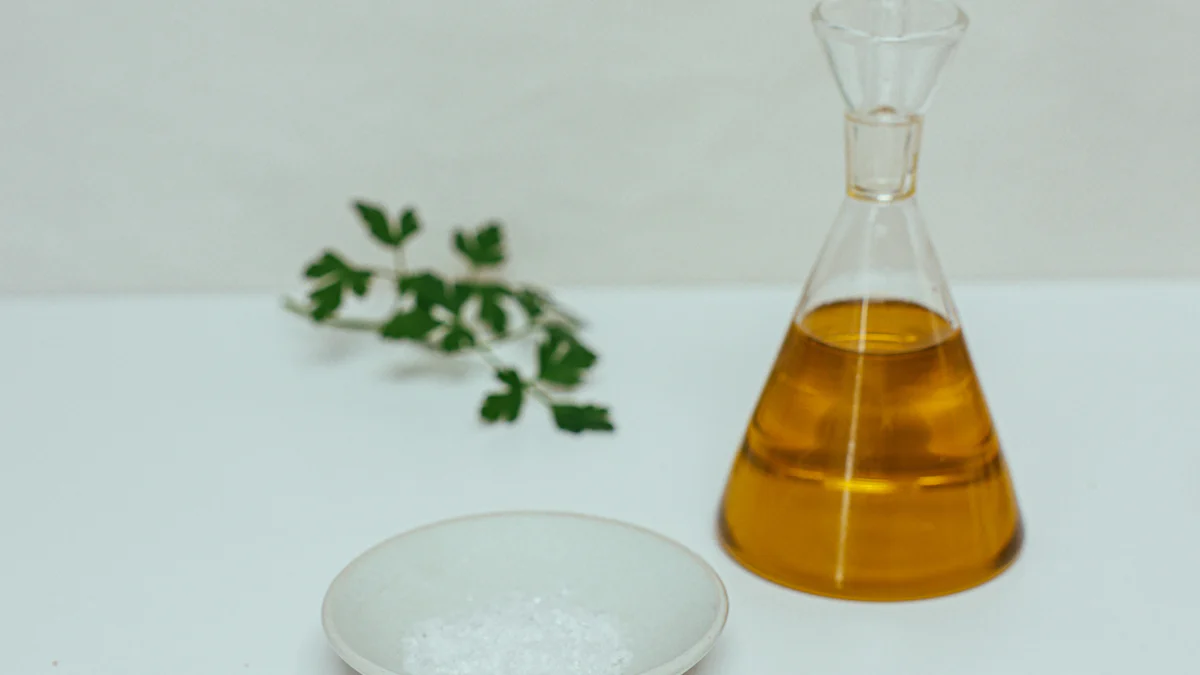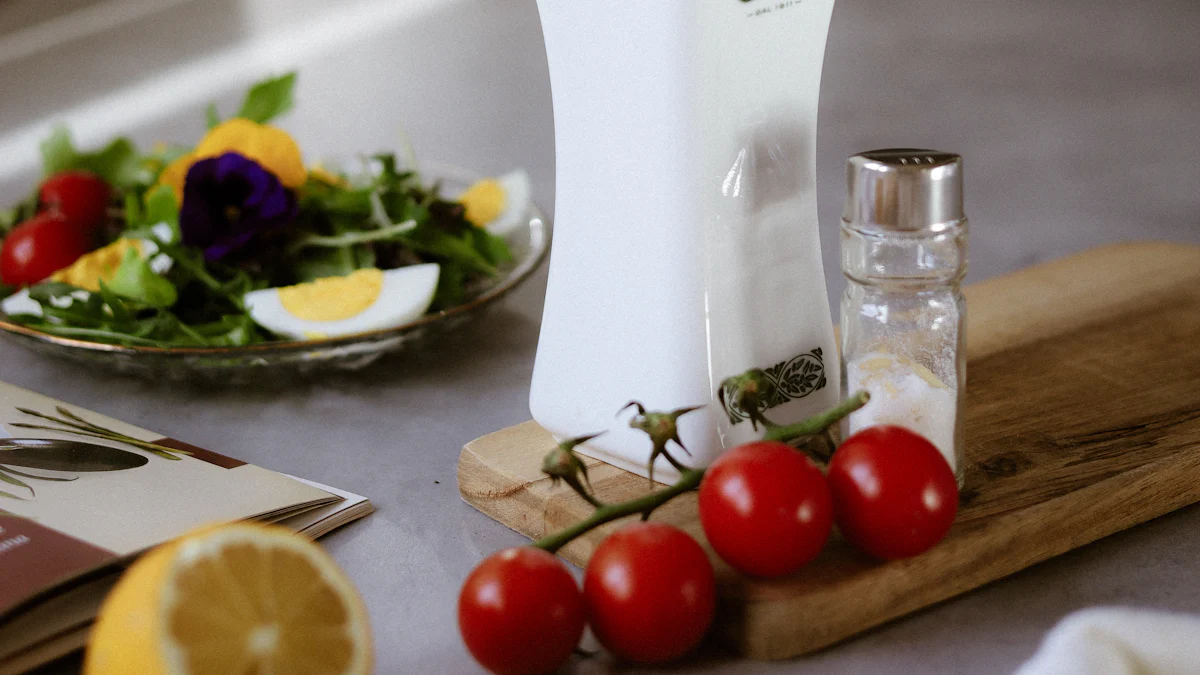
Have you ever struggled to get that perfect drizzle of oil or vinegar on your salad? I know I have! That’s where an oil and vinegar sprayer comes in handy. It helps you control portions, avoid waste, and evenly coat your dishes. It’s a game-changer for any kitchen.
Key Takeaways
- Pick the best sprayer for your cooking. Glass looks fancy, stainless steel is strong, and plastic is easy to carry.
- Spray evenly by keeping the sprayer 6-8 inches from food. Move your hand steadily to cover food without missing spots.
- Clean your sprayer often to stop it from clogging. Wash it after using and let it dry fully before adding more.
How to Use an Oil and Vinegar Sprayer

Preparing and Filling the Sprayer
Getting your oil and vinegar sprayer ready is super easy. First, pick the right sprayer for your needs. Some are made of glass, which looks elegant and keeps things chemical-free. Others are stainless steel for durability or plastic if you want something lightweight. Once you’ve chosen, make sure it’s clean and dry before filling it.
When filling, use a funnel to avoid spills. Add your favorite oil or vinegar, but don’t overfill—leave some space for air. This helps the sprayer work properly. If your sprayer has a pump or trigger, test it with water first to ensure it’s functioning smoothly.
Spraying Techniques for Even Coverage
Spraying evenly takes a little practice, but it’s worth it. Here are some tips I’ve found helpful:
- Choose a sprayer with the right nozzle size for your dish. A fine nozzle works great for salads, while a wider one is better for roasting.
- Hold the sprayer about 6-8 inches away from the food. This distance helps the spray cover more area.
- Use a steady, sweeping motion as you spray. Don’t stay in one spot too long, or you’ll end up with uneven patches.
- If your sprayer allows, adjust the pressure to create smaller droplets. This can improve coverage for delicate dishes.
Avoiding Common Mistakes
Even the best tools can be tricky if used incorrectly. One mistake I’ve made is overfilling the sprayer. It can cause leaks or make it hard to spray. Another common issue is not cleaning the sprayer regularly. Residue can clog the nozzle, so rinse it out after each use.
Also, avoid using thick oils like coconut oil unless your sprayer is designed for them. They can clog the mechanism. Lastly, store your sprayer in a cool, dark place to keep the oil fresh and prevent the bottle from degrading.
Maximizing the Benefits of an Oil and Vinegar Sprayer
Choosing the Right Ingredients
Picking the right oil and vinegar can make a big difference in your cooking. I always think about the dish I’m preparing before I choose. Here’s what I’ve learned:
- Oils with different viscosities can change the texture of your dressings. For example, olive oil creates a smooth finish, while sesame oil adds a nutty richness.
- Vinegar’s acidity level matters too. A higher acidity, like in white vinegar, gives a sharper taste, while balsamic vinegar offers a sweeter, mellow flavor.
- The balance between oil and vinegar is key. Too much vinegar can overpower, while too much oil can feel heavy.
- Adding a pinch of salt can enhance the flavor and help keep the mixture stable.
Experimenting with these combinations has helped me create dressings and marinades that taste just right.
Cleaning and Maintenance Tips
Keeping your sprayer clean is essential. I’ve found that regular cleaning prevents clogs and keeps the flavors fresh. After each use, I rinse the sprayer with warm water. For a deeper clean, I mix water with a little dish soap, spray it through, and then rinse thoroughly. If you use thicker oils, like avocado oil, cleaning becomes even more important. Don’t forget to dry the sprayer completely before refilling it. This simple routine keeps my sprayer working like new.
Adjusting Spray Patterns for Versatility
One of my favorite things about my sprayer is its adjustable spray patterns. Some sprayers, like the Evo Stainless Steel Oil Mister, let you switch between vertical and horizontal fan patterns. This feature is a game-changer. I use the vertical spray for salads to cover a wide area quickly. For grilling or roasting, the horizontal spray gives me precise control. This flexibility makes it easy to adapt the sprayer to different cooking needs, whether I’m prepping veggies or adding a finishing touch to a dish.
Cooking with an Oil and Vinegar Sprayer

Perfecting Salads and Vegetables
Using an oil and vinegar sprayer has completely transformed how I prepare salads and vegetables. It’s amazing how a simple tool can make such a difference. Here’s a quick breakdown of why it works so well:
| Advantage | Description |
|---|---|
| Healthier Cooking | Allows for a fine distribution of oil, leading to less oil usage. |
| Economical | Refillable sprayers are more cost-effective than disposable spray cans. |
| Versatility | Can be used with various oils, vinegars, and even lemon juice. |
When I’m making a salad, I love using extra-virgin olive oil for its mild flavor and health benefits. Pairing it with balsamic vinegar creates a rich, tangy dressing. For a twist, I sometimes use apple cider vinegar, which adds a tart kick and probiotic benefits. The sprayer ensures every leaf gets coated evenly without drowning the greens. It’s also perfect for roasting vegetables. A light mist of garlic olive oil before roasting brings out their natural sweetness and gives them a glossy finish.
Enhancing Roasted and Grilled Dishes
Roasting and grilling are where the oil and vinegar sprayer truly shines. I’ve found that a quick spray of olive oil before grilling locks in moisture and adds a beautiful sheen to meats and vegetables. Here are some ways I use it:
- Drizzling olive oil over grilled vegetables makes them glisten and enhances their flavor.
- Tossing roasted veggies with olive oil brings out their natural sweetness.
- Adding olive oil to rested meat or fish keeps them juicy and flavorful.
- Brushing grilled bread with olive oil creates the perfect base for appetizers like bruschetta.
For grilling, I often use Persian Lime olive oil for a citrusy twist or balsamic vinegar to tenderize meats. One of my favorite recipes is Cilantro Lime Grilled Salmon, where I combine Persian Lime olive oil with Jalapeño Lime balsamic vinegar. The sprayer makes it easy to apply just the right amount.
Creative Uses in Everyday Cooking
The versatility of an oil and vinegar sprayer goes beyond salads and grilling. I’ve discovered so many creative ways to use it in everyday cooking. For example, I like to drizzle olive oil over pasta or risotto to enhance the flavors and create a smoother texture. It’s also great for adding a finishing touch to soups or stews. A quick spray of balsamic vinegar can elevate a Caprese salad or even act as a glaze for fruits like strawberries.
Another fun idea is using the sprayer for baking. I lightly mist my baking pans with oil to prevent sticking, which works better than traditional sprays. It’s also handy for making homemade popcorn. A quick spray of olive oil and a sprinkle of seasoning take it to the next level. The possibilities are endless!
An oil and vinegar sprayer has completely changed how I cook. It’s simple, but it makes meals healthier, tastier, and more fun to prepare. With just a little practice, you can master it too!
Post time: Feb-08-2025